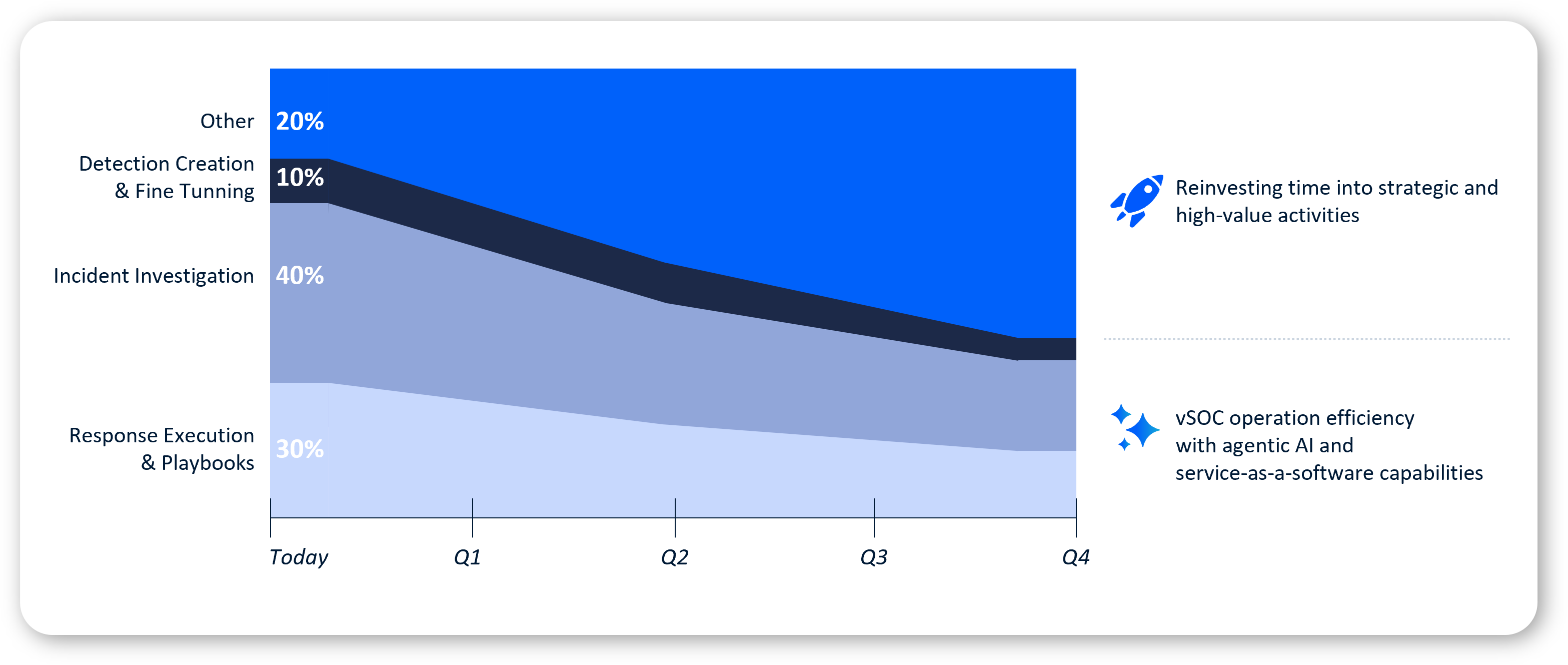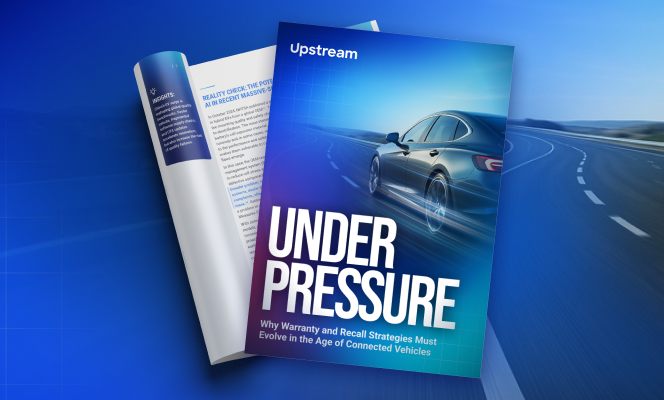

Agentic AI in Action – How Service-as-a-Software Is Reinventing Automotive Cybersecurity Operations
In my previous post, I explored the paradigm shift brought on by service-as-a-software and agentic AI – and what it means for the future of cybersecurity in the automotive ecosystem.
Today, I want to focus on how this shift is being operationalized by industry leaders looking to reduce risk, accelerate response, and do more with the same headcount.
This is not about speculative innovation. These are real-world examples of agentic AI in action – replacing costly, repetitive manual tasks with intelligent systems that scale, adapt, and deliver value on day one.
SOC Automation: From Alert Fatigue to Actionable Intelligence
Modern vehicle cybersecurity generates enormous volumes of alerts – most of which are false positives or lack context. AI agents can be trained to ingest this data, correlate it with vehicle models and behavior patterns, and escalate only what truly matters.
This means fewer alerts, faster investigations, and better outcomes – without the overhead of expanding your SOC team.
CVE Relevance Analysis: Cut Through the Noise
Every year, tens of thousands of new CVEs are published. But not all CVEs apply to connected vehicles – or to your specific fleet and components. Agentic AI can transform SecOps and rapidly triage and analyze CVEs in context, identifying which are truly relevant based on firmware versions, software stacks, or vehicle behavior.
This saves hundreds of hours of manual work and ensures your security team is focused on real exposure – not theoretical threats.
Transforming CVEs into Real-Time Detection Logic
Even once a CVE is identified, creating detection logic to monitor it across connected fleets is a significant lift. Agentic AI can automate this process – building, testing, and deploying real-time detectors that trigger when vulnerable conditions are observed in the wild.
This shortens response times dramatically and adds new layers of resilience to your threat detection capabilities.
Data Parsing & Normalization at Scale
With vehicles generating vast and varied telemetry, one of the greatest barriers to insight is the preprocessing of raw data. AI agents can be trained to parse, normalize, and enrich connected vehicle data across diverse sources, making it usable for security analytics instantly.
What once required a team of data engineers now takes minutes.
Risk Classification and Prioritization: Smarter Triage
Not all incidents are created equal. Agentic AI excels at contextual analysis – combining data sources, historical patterns, and known vulnerabilities to assign real-time risk scores and recommend action paths.
This enables cybersecurity leaders to prioritize the most urgent issues without delay, improving both operational efficiency and incident outcomes.
Looking Ahead: From vSOC Overload to AI-Powered Optimization
At Upstream, we’ve worked closely with leading automotive cybersecurity operations teams and analyzed how time is typically distributed across core SOC tasks. Our analysis shows that today’s vehicle SOC teams spend their time roughly as follows:
- Incident Response & Playbook Execution – 30%
- Incident Investigations – 40%
- Detection Creation & Fine-Tuning – 10%
- Other Tasks – 20%
This distribution reflects an operational model where analysts are overburdened by repetitive and tactical work – leaving little room for proactive or strategic thinking.
By embedding agentic AI across these workflows, this load can be significantly rebalanced. Within 12 months, we project the following shift:
- Incident Response & Playbook Execution – 20%
- Incident Investigations – 20%
- Detection Creation & Fine-Tuning – 5%
- Other Tasks – 55%, which will include strategic planning, data science collaboration, model feedback, and proactive threat hunting

12-month project of vSOC optimization with agentic AI, Source: Upstream Security
This isn’t just about reducing time spent – it’s about increasing the value of the time that remains. With AI handling the heavy lifting, cybersecurity professionals can focus on what truly moves the needle: evolving threat landscapes, predictive defense strategies, and vehicle-wide security posture optimization.
Some final thoughts… The shift toward service-as-a-software and agentic AI is not about replacing people – it’s about empowering them. By automating the routine and scaling the critical, cybersecurity leaders in the automotive space can unlock the true value of their connected vehicle data while staying ahead of rapidly evolving threats.
At Upstream, we believe this is the future of cybersecurity for mobility. We’re already helping industry leaders realize this vision today – and the results are clear: lower operational cost, faster time to insight, and stronger protection at scale.

